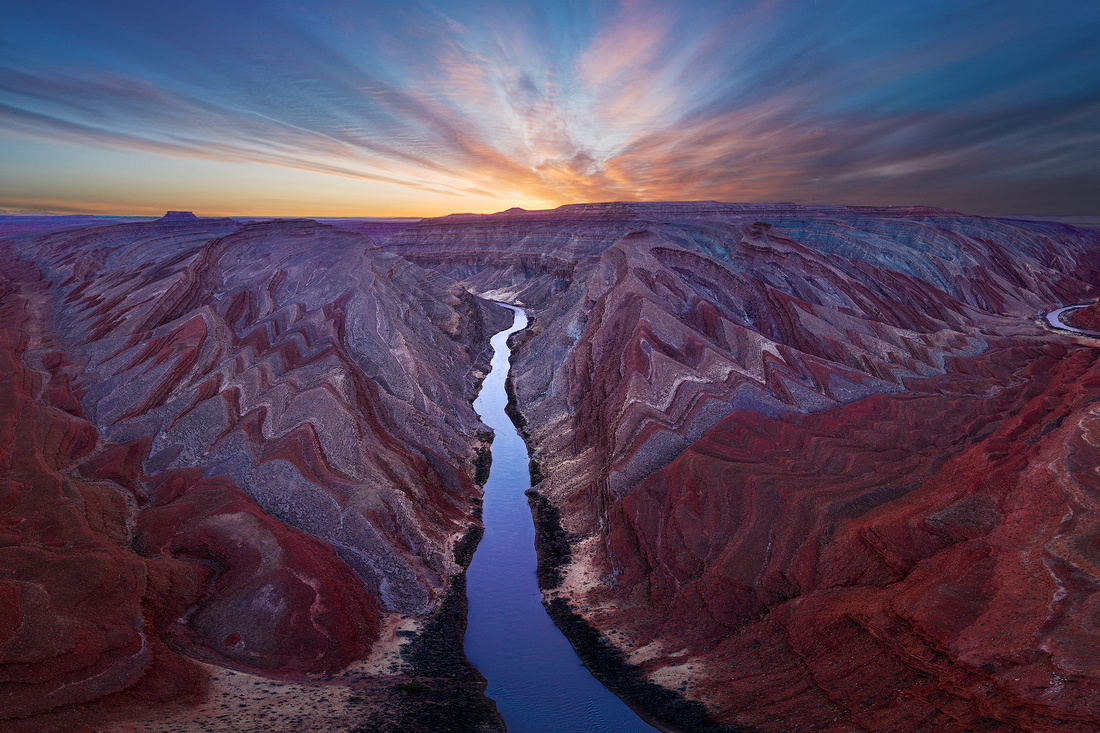Gobsmacked


That’s how I felt when I finally saw it.
My drone was over 5,000 feet away and the entire flight had been over a nondescript desert. I began to doubt whether there was anything worth photographing at my destination.
Then my drone reached the Raplee Ridge in Southeastern Utah. Suddenly and unexpectantly, the land below me exploded into a “Navajo blanket” of multi-colored, zig-zagging triangular shapes. And the San Juan River bisected the scene leading my eye towards the promise of a glorious sunrise.
It was unlike anything I had seen in the last fifteen years of visiting the Southwest.
A Little Geology
How does this happen? Why is this patch of ground so `photogenic?
Raplee Ridge is the result of large-scale tectonic stresses dating back some 40–70 million years. East-west-directed compression and other north-south rock movements folded the underlying, multicolored rock layers into angular shapes below the ground.
The buried buff, reddish-brown, and grayish-colored rock layers awaited erosion to reveal their hidden patterns.
Rainstorms over millions of years provided that erosion. Water runoff cut valleys into the slopes exposing the underlying, zig-zag folded layers. And between those valleys were erosion-resistant, upward-pointing “flatiron” triangles of rock.
The Shot
Despite being fatigued from six straight days of little sleep, fellow photographer and friend Jon Christofersen and I added a seventh day to our trip. We wanted to revisit locations where we had been rained out and unable to fly our drones. Raplee Ridge was one of those locations.
We launched our drones in the pre-dawn towards an unseen destination on our drone’s map. The twilight flight there seemed long and nerve wracking.
Our drones arrived on location just before dawn. The soft, indirect pre-dawn light allowed the colors to “sing.” And the clouds were lighting up beautifully.
During the day, direct sunlight would have acted like bleach, washing out the colors and the drama from the scene.
We photographed furiously until our drones began sending us low battery warnings. Pressing the return to home button on our controllers, our drones began the long flight back to us. We rejoiced in the wonder of witnessing a landscape we never knew existed in beautiful light.
Thanks for looking,
Chuck Derus